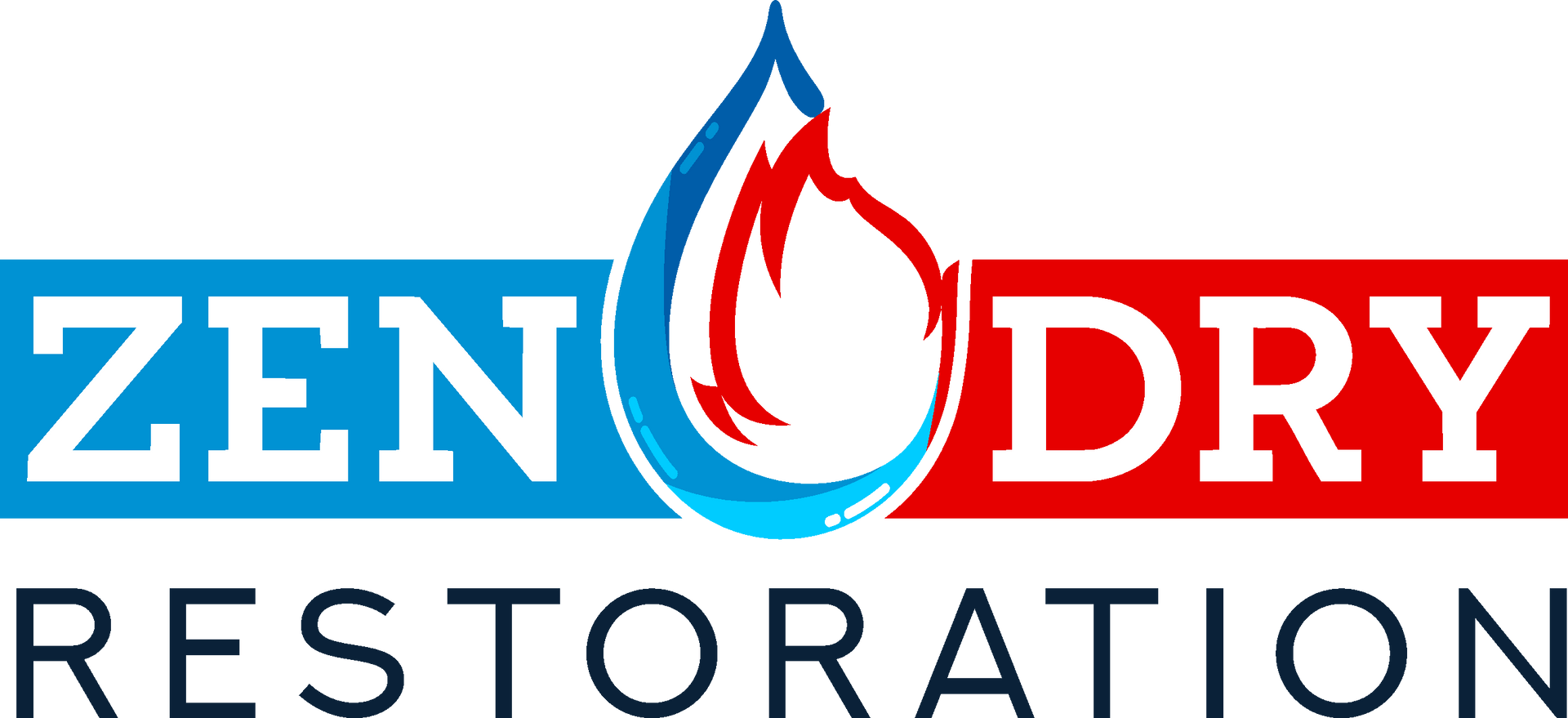Water Damage? This Is What You Should Do Immediately!
If you think you’ve discovered water damage, your first instinct might be to panic. While that reaction is certainly understandable, it isn’t going to do you or your home any favors in the long run. In fact, by taking a few moments to process what has just happened and then putting together a plan of action instead of falling into a state of panic, you can greatly improve your chances of coming out on the other side of this unfortunate incident in as little damage as possible.
Water damage is one of the most challenging and costly restoration scenarios for any property owner. Depending on the source and level of damage, water intrusion can have a variety of negative effects on a property. If you suspect that your property has been impacted by water, it’s important to take action as soon as possible and call for a water damage restoration company
This blog post will detail exactly what you should do if you find yourself in this unfortunate situation.
Understanding Water Damage
Water damage is often a result of leaks from pipes, when there is a leak in your home, you may not notice it right away because it usually takes time for that leak to cause any noticeable damage to your property. However, as time goes on, that small leak will become more severe and may cause mold or mildew to grow on your walls or floors.
The most noticeable sign of water damage is usually mold growth as it's very difficult for water not to grow mold when it has been sitting on surfaces for an extended period of time.
Identifying water damage is not always easy. There are many signs that you might not notice right away, but they could lead to serious problems if left unchecked. The first sign is a damp area on your ceiling or walls that have been there for more than a day or two. Another sign is peeling paint because moisture will cause the paint to separate from the wall surface and start peeling off in sheets.
A third sign is mold or mildew growth, which often starts as spots on ceilings or walls and spreads quickly if not treated immediately. Bathrooms and kitchens are the two most likely rooms to experience water damage in your home. If you see any of these signs, it is important to call a professional as soon as possible before there are more serious problems that could result from waiting too long.
Water Damage Checklist
1. Find the Source
With water damage, it is important to find the source of the leak as soon as possible. The longer you wait, the more damage will be done.
The source of water damage could be due to many different factors such as pipe leaks, toilet overflow, or a broken dishwasher hose leak. If you have any suspicion that there might be a leak, it is best to call an established water damage restoration company.
There are a number of ways to find the source of water damage in your home. First, you should inspect the walls and floors for damp spots or stains that might indicate water damage. You should also look at window frames and door frames for any evidence of water damage.
The most common cause of the cooking fire is when a pot or pan falls to the floor and starts a blaze. Followed by when someone leaves the stove on and forgets about it.
Cooking fires can be prevented by keeping an eye on what you are doing, turning off the stove when you are done cooking, and keeping anything flammable away from the stove.
There are many ways to avoid cooking fires:
- Turn off the stove when you are done cooking.
- Keep an eye on your food while it's cooking.
- Wear oven mitts when handling hot pots or pans.
- Make sure that your stove is not too close to curtains or other flammable materials.
2. Heating
Some people believe that heating can cause fire, while other people think that it is impossible. The truth is that heating doesn't cause fire by itself. It only causes an increase in the temperature of the air and objects. It's the things in the environment around us that can cause a fire to happen. The danger of heating is that as the temperature rises, so does the probability that an object will ignite and eventually burst into fire.
Therefore, the heat from the object will then start to warm up the air around it and this causes a rise in temperature which can then lead to a fire.
3. Electrical
Electrical fires can be caused by many different things. A lot of people think that electrical appliances like TVs, microwaves, and ovens cause fires but actually, they don't, or at least they don't happen as often as you may think. What usually causes a fire is something else in the house like a stove or an air conditioner which then causes sparks that set off an electrical appliance’s power supply system.
Most electrical fire-related accidents are caused by faulty wiring, overloaded circuits, and short circuits.
A short circuit occurs when the electric current does not have the path to return to the power source. Faulty wiring can happen when there is a loose connection or worn insulation. It can also happen when there are two wires that are touching each other and one of them has an electrical current running through it.
4. Smoking
We have all heard the phrase, "smoking causes cancer." But what is less well-known is that smoking can also cause house fires. A cigarette can ignite a nearby object such as a sofa cushion or rug, which then ignites the rest of the furniture in the room. This can lead to a fire that spreads quickly.
Smoking is one of the leading causes of fire accidents in the world. Smoking can cause a fire because cigarettes are often left unattended, and if they get too close to a source of heat, they can ignite. Smoking also damages the walls, furnishings, and other objects in a room which can lead to fires.
The National Fire Protection Association reports that smoking was involved in more than half of all home fires between 2007 and 2012, with an average of 2,500 smoking-related house fires every year. The NFPA also estimates that these fires caused more than $7 billion in property damage and killed an average of two dozen people each year.
5. Candles
The use of candles to light up a room or to create a romantic ambiance can be seen in many homes. However, using candles can also come with some downsides. In fact, there are various incidents where candles were the cause of fires.
The main risk that candles pose is that they may cause fires if left unattended. This can happen if someone leaves them on a table or near curtains and other flammable materials. The risk of fire increases when people use too much wax or if they leave their candles burning for too long.
In recent years, there have been several large fires caused by candles, where several people faced life-threatening injuries as well as some unfortunate fatalities. These incidents have led many people to wonder whether or not it is safe to use candles as part of their home decorating scheme or as part of their plan for emergency lighting when the power goes out.
5 Tips to Avoid Fire Damage In Your Workplace
1. Exercise Caution with Heat Sources
The best way to prevent fire is by being cautious with heat sources. For example, avoid using candles in a room that has a paper or other things that can easily catch fire. It is also important to use the correct type of candle for the room. Candles with a wick are safer than those without because they are less likely to cause a fire.
Some ways to avoid fires are by turning off the stove when you are finished cooking, not placing anything that can easily catch fire on the stove, and keeping the kitchen clean.
The best way to avoid fire in the workplace is to avoid using any heat source, but if you must use one, make sure that it is turned off when you are not using it. When cooking or burning something, always keep a fire extinguisher nearby and make sure it is easy to access in case of an emergency
The following are some tips for fire prevention:
- Keep matches and lighters out of the reach of children.
- Do not leave candles unattended. Extinguish them when you leave the room.
- Do not smoke inside the workplace
- Turn off heat sources such as stoves, ovens, and space heaters when they are not in use.
2. Replaced Damaged Wires
In order to prevent fires, you need to make sure that your wiring is good and not damaged. Damaged wires are more likely to spark and start a fire than well-maintained wiring. It’s also important to make sure that the wires are properly insulated from any possible sources of heat or moisture.
Since damaged wires can be difficult to detect, it’s best to replace them with new ones as soon as you notice them. You don't want an electrical fire on your hands!
The first step is to determine the location of the damaged wire. This can be done by using a voltage tester or by following the path that you believe the wire is taking. Once you have located the damaged wire, cut it off from its connection and then cut off one inch from each end of it. Next, strip away ¼ inch from each end of the wire and twist them together tightly before securing them with electrical tape or heat shrink tubing.
Finally, test your work by plugging in an appliance that uses that circuit and making sure that it doesn’t trip a breaker.
3. Limit Power Outlets
We know that fire is a serious danger in the home. It can spread quickly, destroy property and lives, as well as cause severe injuries. One of the easiest ways to limit the risk of fire is by limiting power outlets.
This technique is not only helpful in preventing a fire outbreak but also in saving electricity. It can reduce the load on the circuit, which will make it more efficient.
The easiest way to limit power outlets is to use a power strip with an on/off switch. This way, you can cut off the power supply to all the devices that are plugged into that outlet when you are not using them and turn them back on when you need them.
4. Remove Clutter
Clutter is a common problem in the workplace. It can cause serious fire hazards and increase the risk of accidents. Clutter removal is an important step in fire prevention in the workplace because it reduces the risk of fire spreading rapidly to other parts of the building due to an increased fuel load.
Clutter removal is incredibly rewarding in the long term as it is an essential part of any fire prevention plan. Fire can be ignited by anything that has an ignition source, including paper clips, pens, or a crumpled-up piece of paper. Clutter removal will help create a safer work environment for employees and reduce the risk of a fire taking place in the first place.
5. Don’t Allow Smoking Inside
There are many reasons why smokers should not be allowed inside the workplace. One is to prevent fire hazards. When people smoke, they can easily start a fire by using their cigarettes as a lighter.
Another reason is to reduce the risk of passive smoking for non-smokers. This is especially important for people who are more sensitive to cigarette smoke and suffer from respiratory problems like asthma or COPD.
A third reason is that it will help in improving the air quality in the workplace which will result in better health for employees and less absenteeism due to sicknesses related to air quality.
The final reason
why smokers should not be allowed inside the workplace is that it will help with reducing stress among employees as there will be fewer distractions caused by other people’s smoking.
Mold Remediation is the process by which a building or structure is cleaned of mold contamination. The process may include the removal of mold and parts of the building that have been affected by mold growth, remediation (the process of removing or mitigating damage caused by mold), and restoration (the process of returning a building to its original or near-original condition).
There are many ways to remove mold depending on the severity of the issue with your home and how much damage has been done by the mold already. One of the most common ones includes cleaning and disinfecting surfaces, using anti-fungal sprays, and removing the mold with chemical agents.
Mold removal can be a difficult process because it's not always possible to see the mold. It's important to remove the source first before removing the mold with a bleach solution or other disinfectant solutions.
Some common DIY ways for mold removal include using natural detergents like vinegar, baking soda, and peroxide, and using specialized cleaners like enzyme cleaners that break down organic compounds into their basic elements.
Mold Remediation can sometimes be an expensive process, but it can be done on a DIY level if you have the right tools. Here are some DIY tips for mold remediation:
Where to find Water Damage Restoration in Marietta, GA?
If you’re looking for guidance or believe the damage is beyond what you can handle, it’s always a good idea to leave water damage restoration to the professionals – contact Zen Dry Restoration Water Damage Experts for 24/7 support. Call us today at (678) 468-3435
Final Thoughts
Water damage can be a huge problem for many people. It can be hard to handle and difficult to determine the source of the water. By reading this detailed guide you should have a good understanding of everything there is to know about water damage restoration.
If you find yourself unable to handle the situation by yourself. It is important to act quickly and call for a water damage restoration company to get the problem fixed as soon as possible.







